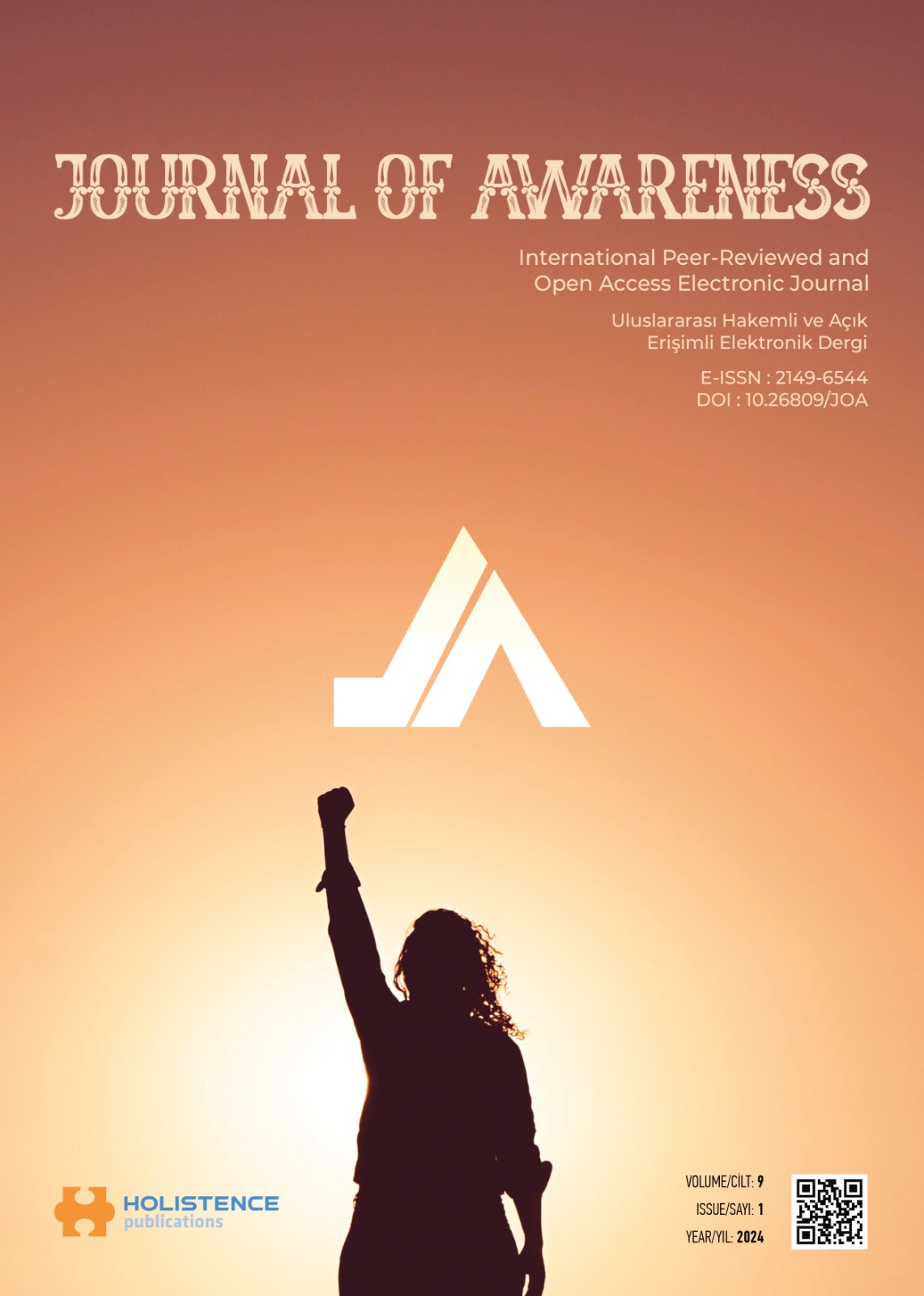Samples of Roman unguentaria from a typological perspective from the Coastal Region of Syria (Latakia city)
DOI:
https://doi.org/10.26809/joa.2278Anahtar Kelimeler:
Typology- Roman Syria- Unguentaria- Double-bulges- LatakiaÖzet
This paper covers a small group of functional types of glass unguentaria dating back to Roman period that an archaeologist may encounter. Additionally, it primarily presents new, previously unexamined glass specimens unearthed, the unguentaria are classified typologically by shape, and all specimens discussed herein have been recovered from the Syrian Coastal Region (mainly Latakia).
Although the samples of glassware from the Roman period selected by the author may seem insufficient for comprehensive research, the main objective of this article is to provide a reliable presentation of glass unguentaria prevalent throughout Roman Syria at the mentioned sites. In addition, this article provides an explanation, documentation, and classification of Roman period unguentaria pieces based on their archaeological context.
The period from the 1st century to the end of the 3rd century AD is considered to be the height of Roman glass production, usage, and distribution; with glass becoming so ubiquitous in all daily matters of Roman life. Additionally, their use in funerary rites became more prevalent. Academic consensus on the topic of Roman glass in general, and on unguentaria in particular; suggests that they were mainly used to hold and store scented oils, cosmetic products, perfumes, and/or sacred perfumed ointments. Further, the common reoccurrence of ¬specimens at burial sites confirms their roles as votive offerings in tombs during funerary religious rites. Despite being commonplace objects, and despite the variations in their styles, research into the location and significance of glass production centers around the Mediterranean remains lacking.
İndirmeler
Referanslar
ANTONARAS, A.C. (2010). Early Christian and Byzantine Glass Vessels: Forms and Uses. in Byzanz - das Römerreich im Mittelalter. Eds: F. Daim & J. Drauschke. 383-430, Germany: Römisch-Germanischen Zentralmuseums, ISBN: 978-3-88467-155-9.
BRYCE, T. (2014). Ancient Syria a Three Thousand Year History. UK: Oxford university press, first Edition, ISBN: 978–0–19–964667–8.
BUTCHER, K. (2004). Roman Syria and the Near East. London: British Museum press, first Edition, ISBN: 0714122351.
DÉVAI, K. (2012). Késő római temetkezések üvegmellékletei Pannoniában. Üvegedények a mai Magyarország területéről I. Thesis (PhD). Eötvös Loránd University.
DÉVAI, K. (2016). Glass vessels from late Roman times found in Pannonia. Acta Archaeologica Academiae Scientiarum Hungaricae. 67, 255-286.
FLEMING, S. (1996). Early Imperial Roman glass at the University of Pennsylvania. Expedition Magazine of Penn Museum. 38 (2)
ATTI, F. (1982). TārÐkh SūriyÁ wa Lubnān wa Filas Ðn. Translators: G. addād & A. Rāfiq. Bayrūt: Dāral-thaqafa, third Edition.
ISINGS, C. (1957). Roman glass from dated finds. Groningen.
KELLEY, M. (2012). A Study of Late Hellenistic and Early Roman Glass in Jerusalem from Excavated Sites: Understanding Local Production and the Economic Status of the Population from the Time of the Hasmoneans to Hadrian. Thesis (MA). Jerusalem University College.
KHAIRY, N.I. (1980). Nabataean Piriform Unguentaria. Bulletin of the American Schools of Oriental Research. 240(1), 85-91.
LAFLI, E. (2018). Unguentarium. A terracotta vessel form and other related vessels in the Hellenistic, Roman and early Byzantine Mediterranean. An international symposium. Eds: E. Laflı & G. K. Şahin. 17-18 May 2018, Izmir, Türkiye: The Research Center for the Archaeology of Western Anatolia, 12-15.
LIGHTFOOT, C. S. (2017). The Cesnola Collection of Cypriot art, ancient glass. New York: Metropolitan Museum of Art, ISBN-13: 978-1588396815
PRICE, J.& COTTAM, S. (1998). Romano-British glass vessels. A Handbook. Council for British archaeology. ISBN-13: 978-1872414966.
PRIOR, J. D. (2015). The Impact of Glassblowing on the Early-Roman Glass Industry (circa 50 B.C. A.D. 79). Thesis (PhD). Durham University.
ROTROFF, S. I. (2006) Hellenistic Pottery: The Plain Wares. The Athenian Agora. 33, 141-160.
RUTH, E. J. T. (2004). The Late Hellenistic Glass Industry in Syro-Palestine: A Reappraisal. Journal of Glass Studie. 46, 11-32.
RÜTTI, B. (1991). Die römischen Gläser aus Augst und Kaiseraugst, 13/1. Römer Museum.
SARAÇOĞLU, A. (2011). Hellenistic and Roman Unguentaria from the Necropolis of Tralleis. Anatolia. 37, 1-42.
SCOTT, R.B. & DEGRYSE, P. (2014). The archaeology and archaeometry of natron glass making. Glass Making in the Greco-Roman World Results of the ARCHGLASS Project. Ed: P. Degryse. 15-26. at 17.
STOJANOVIĆ, V. R. A. (1987). The Chronology and function of Ceramic unguentaria. American Journal of Archaeology. 91, 105-122.
TELLI, E. (2019). Unguentarium as a Ceramic Vessel. 1st International Aromatic Plants & Cosmetics Symposium. Ed: S. Yiğit. 3-6 October 2019, Iğdır, Türkiye, 18-23.
WEINBERG, D. G. & STERN, E.M. (2009). VESSEL GLASS. The Athenian Agora. 34.
İndir
Yayınlanmış
Nasıl Atıf Yapılır
Sayı
Bölüm
Lisans
Telif Hakkı (c) 2024 Holistence Publications

Bu çalışma Creative Commons Attribution 4.0 International License ile lisanslanmıştır.
Yazarlar, makale Journal of Awareness’de yayınlanmak üzere kabul edildiğinde.makalenin içeriğindeki tüm telif haklarını, Rating Academy Ar-Ge Yazılım Yayıncılık Eğitim Danışmanlık ve Organizasyon Ticaret Ltd. Şti’ne devrederler. Yazarlar, patent hakları gibi telif hakkı dışındaki tüm mülkiyet haklarını saklı tutar.
Bu makalede yazar olarak listelenen herkes çalışmaya önemli, doğrudan, entelektüel katkılar yapmış olmalı ve bunun için kamu sorumluluğu almalıdır.
Bu makale daha once yayınlanmamış ve başka dergilerde yayınlanmak üzere gönderilmemiştir.










